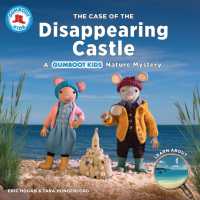Full Description
In every field of mass communications—advertising, entertainment studies, journalism, public relations, radio-television-film, tourism, and visual reporting—professionals understand the importance of storytelling. Regardless of whether the finished product is a commercial, an in-depth investigative piece, a public service campaign, an independent documentary, a travelogue, or a collection of photographs, effective storytelling requires a combination of creativity, empathy, and expertise. Through the innovative technologies and techniques described in this textbook, students will learn how to turn passive readers and viewers into engaged and regular users.
The sixteen chapters each include a brief introduction, assignments, simple-to-follow step-by-step exercises, and sources for additional information in which users will learn to produce apps, informational graphics, quick response codes, quizzes, simulations, smartphone and table icons, social media campaigns, three-dimensional pictures, and video. Students will work with the following programs: Blogger, Dreamweaver, Excel, Facebook, GeoCommons, Google Maps, Illustrator, Imgur, iMovie, Infogram, iShowU, JavaScript, JustGive, Kaywa, Kickstarter, LinkedIn, Onvert, Photoshop, Pixel Resort, QuickTime, Reddit, Second Life, SurveyMonkey, TheAppBuilder, Twitter, Vizualize, Wikipedia, Word, WordPress, and YouTube.
When digital innovations are added to traditional print and screen presentations, a media user is not only allowed to interact with the information but can also physically engage with the story displayed. Giving students the tools they need to transform their storytelling in this manner is the ultimate goal of this textbook.
Contents
Preface: Digital Innovations for Mass Communications I. Essential Knowledge 1. A Historical Perspective 2. Digital Media Consumer Types 3. Ethical and Legal Considerations 4. Visual Aesthetics II. User-Generated Content 5. Social Networks 6. Virtual Communities 7. Virtual Reality III. Database-Generated Content 8. Suggestive Innovations 9. Personalization 10. Mapping IV. Software Driven Content 11. Games 12. Simulations 13. QR Codes 14. 3D Displays 15. Apps V. Immersive Experiences 16. Transmedia Storytelling Conclusion: Tell Stories that Engage Appendix: Short Story, "Virtual Photography: When Images Become Real"







